#emile cohl
Explore tagged Tumblr posts
Text

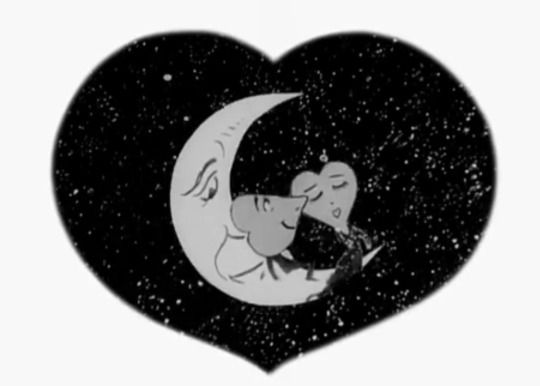
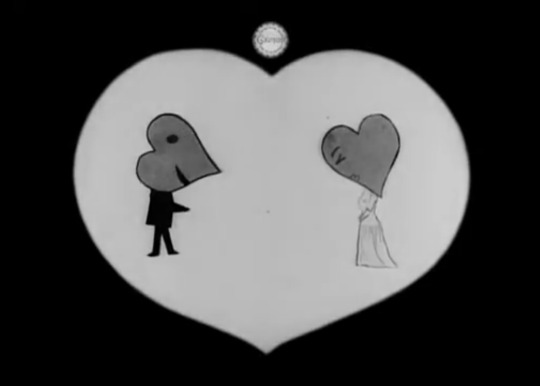
affairs of the heart (1909) dir. émile cohl
7 notes
·
View notes
Text
On February 3, 1984, Fantasmagorie was screened at the Goteborg Film Festival.
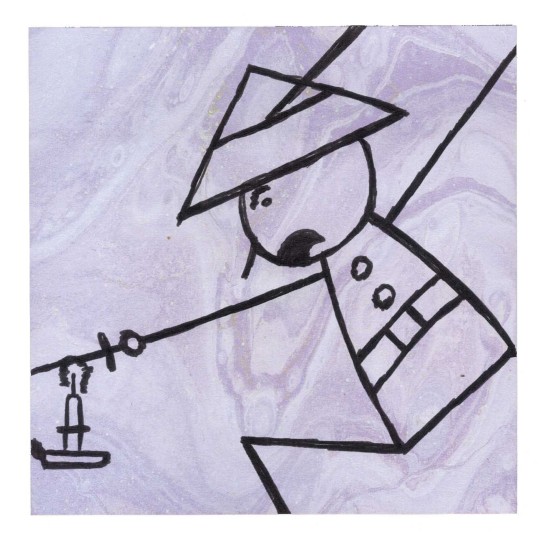
#fantasmagorie#emile cohl#animated film#cartoon#short film#anomated film#movie art#art#drawing#movie history
7 notes
·
View notes
Text
Emile Cohl
Emile Cohl was born in 1857, his father was a rubber salesman. In 1863, when he was 6 years old, he was sent to the boarding school Institute Vaudron. This is where it was discovered he had a talent for illustration and was encouraged for it, however due to the Franco-Prussian War in 1870 his father had to shutdown his rubber factory. This led Cohl to be sent to a less expensive boarding school, Ecole Turgot, where he would attend marionette theaters and work as a poltical caricaturist. In 1878, he became an assisstant under Andre Gill, a famous french caricaturist, who would become Cohl's mentor and close friend. Cohl would become instantly famous when he would make cartoons insinuating that the then French President Patrice MacMahon was the reason the french lost the Battke of Sedan agasint Prussian forces. This led him to be fined and imprisoned for 10 days, on the 11th of October 1879. This skyrocketed Cohl's popularity.
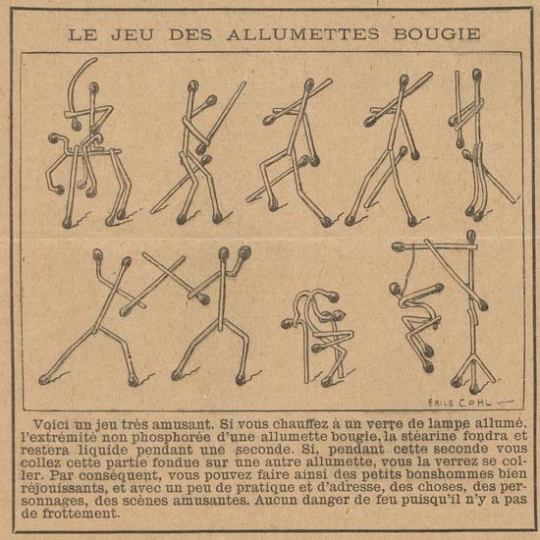
In 1907, Cohl changed careers at the age of 50, becoming a scriptwriter for the film company Gaumont. He was inspired by John Stuart Blackton, who had already made several animated comedies, and studied his work in order to make his own animated films. Cohl deviated from Blackton's methods, while Blackton would draw with a chalkboard and chalk, Cohl drew each frame individually on hundreds of pieces of paper. This would make Cohl's method far closer to modern animation methods compared to Blackton's. In 1908, Cohl made his first animated movie "Fantasmasgorie" and it is considered the first genuine animated movie. It's success paved Cohl's way into making an abundance of animated films for various studios,even travelling to America for work.
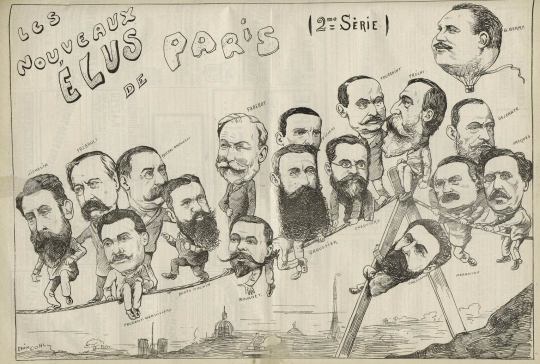
9 notes
·
View notes
Text
youtube
Ladies & Locks (2021) [5 min] by Guillaume Deneuve | France
#2D#2D Animation#2021#5 min#Guillaume Deneuve#France#Animated Short#AnimatedShortOfTheDay#Animation#Tale#Charles Perrault#Bluebeard#Ecole Emile Cohl#Youtube
15 notes
·
View notes
Text

Desde Blog Orviton Animaciones: Proyectos de graduación en animación de EEC 2022.
[ Acceder ]
#Ecole Emile Cohl#Tom Bravi#Chasseur de prime#All day fukushima#Marianne Maffray#La Longue Pluie#Cassandre Leonard#La Soif#Yifu Chen#Les Taches#Antoine Regeste#animación#animation#2d
0 notes
Text
Clowns in film
youtube
Pauvre Pierrot (1892) pauvre pierrot is some of the oldest captured clownery we have. Also one of the oldest animated films. It consists of 500 individual paintings and is considered the oldest surviving animated film. It was released in 1892 by Charles-Émile Reynaud. It is very interesting to see the amount of clowns in early animations.
le clown et ses chiens (1892) was also made by Emile Reynaud features a clown and his dogs doing tricks such as jumping through a hoop, walking on a ball, and jumping over a wand. Sadly this film has been completely lost. Many of Émile Reynaud films were thrown into the Siene when he went through a bout of depression after he lost most of his audience.
Fantasmagorie (1908) which is often considered the first traditional animated film and features what I believe to be a circus clown. Directed by Émile Cohl this film is only 2 minutes long and demonstrates the reality altering power that early clowns had.
Little Nemo (1911) by Winsor McCay is one of the first animats done by an American his animation feature a hobo clown and his companion. His companion is an extremely racist depiction of a black person and he called them “imps” this kind of thing is not uncommon when looking back at old animations. Even steam boat willie has depictions very similar. It is sad and disgusting that some of first animations in the US used people of color to further their jokes and paint their humor.
Koko the clown (1918) this character was created by Max Fleischer. Koko a pierrot was the protagonist of Out of the Inkwell. This series ran from 1918 to 1929.
10 notes
·
View notes
Text
1) 2D animation is born

Emile Cohl, the father of animation.

Scenes from ‘Fantasmagorie’ (1908)
youtube
‘Fantasmagorie’ (1908) by Emile Cohl.

Winsor Mccay, father of the animated cartoon.
youtube
'Little Nemo' (1911) by Winsor McCay.

Vitagraph production company (est. 1892)

evidence of animation from the Paleolithic era.

Thaumatrope - This was a disc that had images on both sides, and this disc was attached to a string. When pulled, the disc would spin thus making the images change and create the illusion of movement.

Zoetrope - from the Greek word that means 'wheel of life'. Actions are drawn on a strip of paper and placed in a cylindrical container with slits that we can view the movement from.

Flipbooks - movements drawn on a corner of each page and flipped to show movement.

Gertie the dinosaur, the first keyframe animated character.

3 notes
·
View notes
Video
youtube
Princess Nicotine; or The Smoke Fairy 1909
“This tale of a tormented smoker was the most celebrated special effects film of its day, the subject of a 1909 article in Scientific American and a chapter in a 1912 book entitled Motion Pictures: How They Are Made and Worked. "The effect of The Princess Nicotine when thrown upon the screen is so startling that it defies explanation by the uninitiated," reported Scientific American; "The little fairy moves so realistically that she cannot be explained away by assuming that she is a doll, and yet it is impossible to understand how she can be a living being, because of her small stature."
Trick films were a specialty of the New York-based Vitagraph Company, then America's leading film producer. Vitagraph had been founded back in 1897 by magician Albert E. Smith and J. Stuart Blackton, a newspaper illustrator and "lightning sketch" vaudeville cartoonist. Their interests intersected in trick films, inspired by Georges Méliès's pioneering French fantasies. Princess Nicotine; or, The Smoke Fairy, produced and probably directed by Blackton, found its immediate source in another French film, Emile Cohl's The Animated Matches (1908).
Blackton's film used double exposure (for the fairy in the bottle), stop-motion animation (for the rose that transforms into a cigar), as well as more mundane tricks: hidden wires, giant props, and a man under the table blowing smoke. The shots of the tabletop fairies were accomplished through ingenious on-set optics rather than in-camera double exposures: The actresses performed on a platform next to the camera, and their image was reflected in a mirror placed far behind the table. (The trick also relied on a lens capable of extreme depth of field, so that both the smoker and fairies are in focus.) Because the camera height was aligned with the tabletop, the fairies appear to be dancing on it.” TEXT via YouTube
1 note
·
View note
Text



108.Imagination
07/11/2024
BD fait en Monochrome à l'aquarelle pour Emile Cohl ici on devait faire un personnage qui entendait un bruit bizarre a la porte, la couleur s'intensifie avec la peur du personnage.
J'aime bien les charadesign notamment celui du chien qui me fait beaucoup rire mais aussi celui du perso principale qui est plutôt diffèrent de ce que j'ai l'habitude de faire.
0 notes
Text

4me4you features “FACING THE FUTURE”
Artist: JERÔME MASI
“Masi’s use of subtle abstraction evokes spiritual reflection, with compositions stripped to their core, inviting viewers to find meaning in the spaces between form and absence”.
4me4you recently had the opportunity to visit Stolen Space Gallery, where we experienced "Facing the Future," a captivating solo exhibition by the renowned French artist Jérôme Masi.
Known for his unique minimalist approach, Masi masterfully transforms the mundane elements of everyday life into abstract compositions that invite profound reflection.

Masi, demonstrates his exceptional ability to distill complex concepts into elemental forms, using simplicity to explore deep, universal themes. His works, stripped to their core components, reflect a world in constant flux, placing viewers at the crossroads of past, present, and future. This introspective approach encourages the audience to reflect on their own collective journey and the uncertainties that lie ahead.
A defining feature of Masi's art is his portrayal of figures looking away, a deliberate technique that creates space for personal interpretation. This subtle ambiguity invites viewers to emotionally engage with the pieces, projecting their own narratives onto the scenes. Through this minimalist lens, Masi highlights the essence of the human experience, blending simplicity and complexity to reveal both the beauty and tension inherent in contemporary life.
Born in 1977 in France, and a graduate of the Emile Cohl School in Lyon, Masi has cultivated a style that combines clarity with poetic resonance. His bold use of colour fields and elegant silhouettes speaks to his background as a designer and illustrator, bringing precision and grace to each of his works. With exhibitions held in Paris, London, Geneva, Melbourne, and Hong Kong, Masi’s art continues to captivate audiences worldwide, offering a pause from the rapid pace of modern life.
"Facing the Future" is more than a minimalist exhibition—it’s an invitation to reconnect with the deeper rhythms of existence, where simplicity is imbued with profound meaning.
SEE MORE:
WEBSITE: STOLEN SPACE GALLERY
0 notes
Video
youtube
Emile Cohl - Fantasmagorie 1908 Convite Cartaz Animado em Vídeo
Convites Digitais Sunnyside
Trabalhamos somente
com produtos digitais.
Que podem ser enviados
pelas redes sociais.
produtos personalizados em
qualquer tema e ocasião
Kit de Etiquetas Escolar
Convite Animado em Vídeo.
Convite Cartaz Animado em Vídeo.
Convite Digital em JPEG (FOTO).
Convite Digital e Interativo
Cartão de Visitas e Curriculum Digital e
Interativo (PDF). Com links clicáveis.
WhatsApp 19983094654
https://convitesdigitaissunnyside.blogspot.com/
https://www.elo7.com.br/sunnyside
https://www.youtube.com/@sunnyside2532
0 notes
Text
On August 17, 1980, Fantasmagorie premiered in Paris, France.

#fantasmagorie#emile cohl#animated film#early filmmaking#animated short#paris#france#movie premiere#early animation#experimental film#french film#movie art#art#drawing#movie history
1 note
·
View note
Text
Émile Cohl
4 January 1857 – 20 January 1938)
French caricaturist of the Incoherent Movement, cartoonist, and animator, called "The Father of the Animated Cartoon".
enrolled at the Ecole professionnelle de Pantin, a boarding school known as the Institute Vaudron after its founder. – where his artistic abilities were discovered.
Got a letter of rec to approach Andre Gill, who was a well-known caricature artist, for a job by Étienne Carjat
job as one of several assistants to Gill was to complete the backgrounds; he may have done a few of the illustrations by himself. During this process, he developed a style of caricature based on Gill's. Gill's trademark was the large, recognizable head of the target (with a fairly benign expression) atop a small puppet body, Émile took this style and added touches to suggest movement and imagery from the rest of Guignol puppetry
1908 Emile created Fantasmagorie which was the first animated film using hand-drawn animation, people consider it to be the first animated cartoon. Cohl was inspired by the stop-motion technique.
Animation principle – anticipation
Anticipation allows the audience to clearly see what a character is doing and understand what the character is planning to do, so that each action does not come as an abrupt surprise, it also allows fluidity in the movements which allows them to make them less stiff.
Anticipation prepares the audience for an upcoming action, enhancing storytelling and character expression
0 notes
Text
youtube
Chasseur de Prime (2022) [4 min] by Tom Bravi | #France
#2D#2D Animation#2022#4 min#Tom Bravi#France#Animated Short#AnimatedShortOfTheDay#Animation#Bounty Hunter#Hunt#Ecole Emile Cohl#Action#Chase#Youtube
0 notes
Text
Animation skills"Bouncing Ball" Part 2
02.10.2024-This is basically my updated version of the ball I made in the previous class.
I decided to draw the head itself, because I saw from the corner of my eye that others already had some ideas of what to turn the ball into something else and I didn't really want to repeat myself, so I couldn't think of anything better than to try to draw a character's head.
Of course, I had some problems because the head has a slightly different shape and I tried to figure out how to make it spin when it falls and arrives, but at the same time look good. During the classes, when I finished making the shots of this head, I decided to figure out how to paint in TV Paint, because it is a completely new programme for me, so I decided to work on it too, and so on until I decided to add more effects when it falls on the floor and we can see explosions, which reminds us of something from a comic book.
Looking at it now, I realise that I could have tweaked the moments when she falls a little bit, because it seems to me that I didn't keep the size of the head itself, which makes it seem a little bit sharp or slow in some moments, like at the beginning when she falls. So I need to be more careful next time.
I also drew a couple of other ball animations, one where a person swings and the ball falls on the floor. And the other one is just a ball rolling. I decided to try not to sit in class, but to try to do something, even if it may not be relevant to the topic we are studying.
Research Element 02
Research Anticipation
Anticipation is also one of the 12 principles of animation, it comes after Squash and Stretch. Anticipation is a signal to the viewer to prepare for the next movement before the movement is made. And this principle can be forgotten quite often, as animators can focus more on creating characters, animation and other things, which can make the final result look unnatural. One of the examples of anticipation is when a character has a ball and is preparing to throw it, and we can see that before he throws the ball he first swings, and thus the viewer is waiting for the moment when he finally throws it and the ball starts to fly. Therefore, anticipation is also an important thing for creating animation.
Another example below:

Reference List:
deedeecourse. “12 Principles of Animation: Anticipation.” DeeDee Studio, 27 Sept. 2021, www.deedeestudio.net/en/post/principles-animation-anticipation. Accessed 9 Oct. 2024.
Research about Emile Cohl

(4 January 1857 - 20 January 1938)
Émile Collet was a French comic artist and animator. He was one of the first pioneers of animation in the early 1900s and created simple cartoons and stick figures. He is also known as the father of animated films.
In 1907, at the age of 50, Émile Colle began his career as a screenwriter for the Gaumont film company. It is also rumoured that in 1908, when Cogle found out that the Gaumont film company had plagiarised one of his comic strips, he confronted the manager of the offending studio and Cohl was hired on the spot as a scenarist.

His first animated film was Phantasmagoria (1908) and is considered to be the first fully animated film to use 700 drawings on sheets of paper, each photographed separately. Cole developed his own distinctive style of animation, in which a figure metamorphosed into an unexpectedly different image, mocking notions of reality and logical sequence.
Cole made over 250 films between 1908 and 1923
To create the animation, Cole placed each drawing on a lighted glass plate and traced over all the subsequent drawings, showing the variations necessary to show the movement, and he also used a chalkboard. At the time, blackboard caricaturists were common in vaudeville, so he created the illusion that the characters were drawn on a blackboard. Cole achieved this by shooting black lines on paper and printing them in a negative
His animated cartoons displayed many elements derived from his Incoherent philosophy – stream of consciousness storytelling, bizarre humour, parodies of both scientists and artists, grotesque figures, and fluid metamorphoses.
Reference List:
classiccartoon. “Emile Cohl - Fantasmagorie 1908.” YouTube, 2 Nov. 2006, www.youtube.com/watch?v=aEAObel8yIE. Accessed 9 Oct. 2024.
“Cohl, Emile (1857–1938) - Routledge Encyclopedia of Modernism.” Www.rem.routledge.com, 26 Apr. 2018, www.rem.routledge.com/articles/cohl-emile-1857-1938.
“Émile Cohl.” Lambiek.net, 23 Oct. 2023, www.lambiek.net/artists/c/cohl_emile.htm. Accessed 9 Oct. 2024.
“Emile Cohl: The Father of the Animated Cartoon.” Makematic, 7 Sept. 2017, makematic.com/blog/emile-cohl-father-of-animated-cartoon. Accessed 9 Oct. 2024.
urbanora. “Emile Cohl.” The Bioscope, 17 Feb. 2008, thebioscope.net/2008/02/17/emile-cohl/. Accessed 9 Oct. 2024.
0 notes